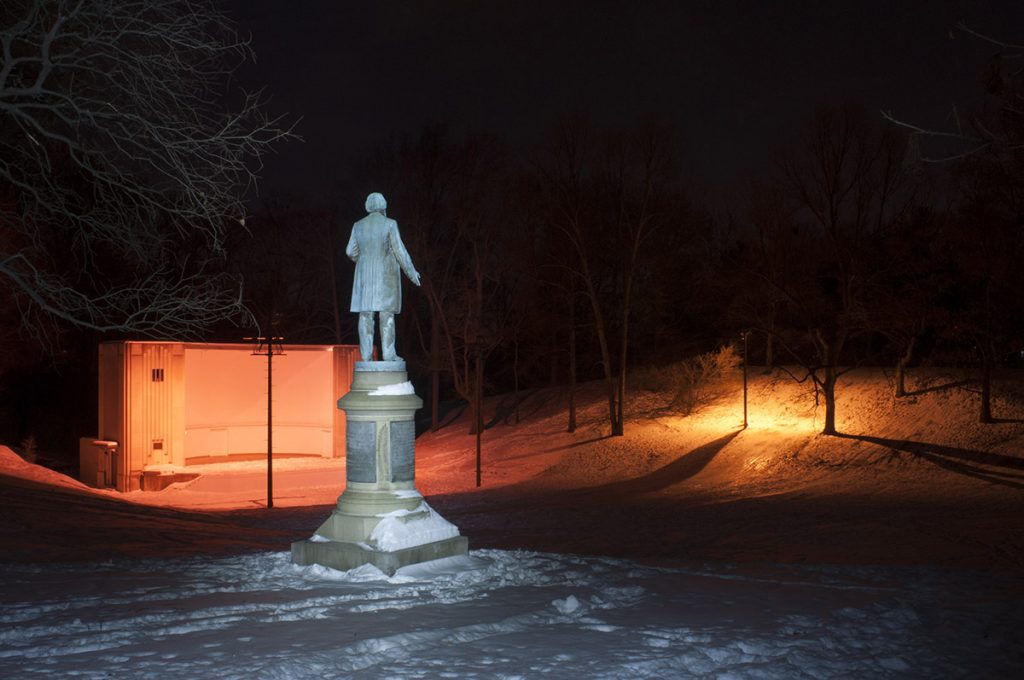Outside the classroom: Shine A Light on Frederick Douglass
At the end of summer, the RIT Big Shot was invited to participate in a project entitled, Re-energizing the Legacy of Frederick Douglass.
Re-Energizing the Legacy of Frederick Douglass was conceived to be a public art project, exhibition and community-wide reflection commemorating the 200th anniversary of Douglass’ birth. Rochester Contemporary Art Center (RoCo) would be curating an exhibit that would feature new works by regional artists that reflected on the legacy of Douglass, how Douglass has been memorialized and how his legacy and image continues to live. The Big Shot was invited to produce a photograph of the Douglass statue located in the Highland Park Bowl, located in the City of Rochester.
A portion of the email invitation is shared below,
” The Frederick Douglass statue in Highland Park has had a long history. It has been moved several times since it was created and in fact will be moved again during the summer of 2018 to the corner of South Avenue and Robinson Drive. February 14 is Frederick Douglass’ birthday. We are hoping that RIT would be open to the idea of a “mini” Big Shot to document the statue in its current location on that date. Not only would this be an opportunity to creatively document the Douglass statue in its current location but we believe it would be a wonderful opportunity to “illuminate” the Douglass legacy. The event would coincide with the show at RoCo, which would be great synergy.
Is this something that we could discuss?
Many thanks,
Chris Christopher”

Michael Peres met with the organizers to discuss their ideas and how it might fit with the Big Shot projects at the statue in early September. At the informal meeting, Peres agreed to discuss the idea with members of the Big Shot team but that he was uncertain if the subject could become an official Big Shot. The Big Shot committee enthusiastically welcomed the opportunity to contribute to the celebration.
As the seasons passed from summer to fall to winter, everyone stayed in touch refining the plan needed ti make a nighttime community photograph of the statue illuminated solely by handheld light sources. The statue by itself is not enormous but Douglass’s legacy is HUGE. The Big Shot photographers challenge was how to make a singular photograph of a statue to represent the work of such an important luminary?
Frederick Douglass (born Frederick Augustus Washington Bailey; c. February 1818 – February 20, 1895 was an African-American social reformer, abolitionist, orator, writer, and statesman. After escaping from slavery in Maryland, he became a national leader of the abolitionist movement in Massachusetts and New York, gaining merit for his dazzling oratory and incisive antislavery writings.
He moved to Rochester around 1843, where he embarked on another career as a newspaper publisher. On December 3, 1847 his four-page weekly newspaper, the North Star started rolling off the presses. As an anti-slavery publication, published by an ex-slave, its initial reception was cold. Over time, however, Rochestarians came to support the paper.
North Star later merged with the Liberty Party Paper to form Frederick Douglass’s Paper. His skill as a speaker was so great as to fill not only the A.M.E Zion Church but also Corinthian Hall, where he brought the National Negro convention to Rochester in July of 1853. His efforts helped to make Rochester a focal point in the struggle for the abolition of slavery.
Sadly, following an unexplained fire that destroyed his home in 1872, he broke his ties with Rochester and moved to Washington. One of his most famous speeches, What to the Slave is the Fourth of July?, was written and delivered, in response to being invited to speak at one of Rochester’s Fourth of July celebrations. You can listen to this Learn Out Loud mp3 the speech for free. He is buried in the Mt. Hope Cemetery, Two years after his death he was honored with a statue, and was the first black person to have a statue raised to him in the U.S.A. That statue still stands in the Highland Bowl.
Making a nighttime community photographic art project is what Big Shot does. The Big Shot relies on the participation of hundreds of volunteers to provide the primary light source for the image while RIT photographers shoot an extended exposure. It’s a signature event for RIT and is led by the School of Photographic Arts and Sciences, which is nationally recognized for its degree programs.
Often described as “painting with light,” the Big Shot asks volunteers to “paint” or shine their lights source onto a particular area of the landmark while the photograph is taken. The light sources are usually either handheld flashlights or camera flash units. The picture is made regardless of weather conditions. RIT started its Big Shot project in 1987 and the event has traveled to several national landmarks and twice crossed the Atlantic Ocean. Thirty-two photographs have been made and Big Shot photographers have captured such landmarks as AT&T Stadium (formerly Cowboys Stadium) in Arlington, Texas; The Alamo in San Antonio, Texas; the U.S.S. Intrepid in New York City; Pile Gate in Dubrovnik, Croatia; the Royal Palace in Stockholm, Sweden; and the Smithsonian National Museum of the American Indian in Washington, D.C.
Members of the Big Shot, perform a lot research before committing to a camera position, framing and how to manage the crowd (always a variable) are agonized. Shared below is the nighttime scene with no light painting and then with light painting.
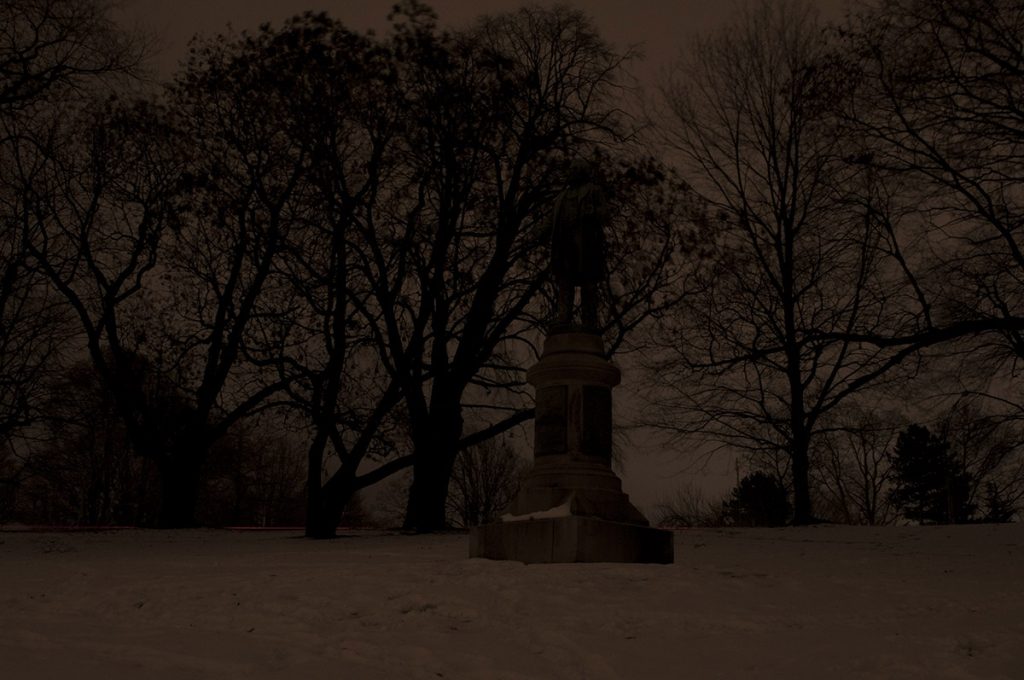
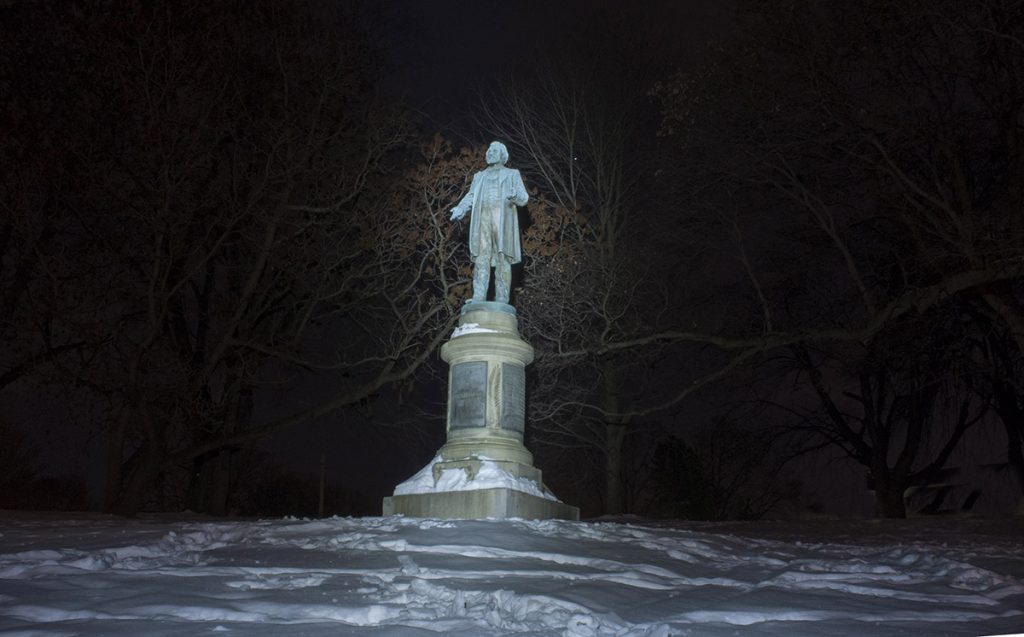
During one of the tests, ambient lighting was discovered to be on an automatic switch and needed to be turned off.
February 14th the chosen day of Douglass’ birth which remains today unknown arrived and it was clear and 41F. 400 people attended the event and the photographs shared below were produced by the Big Shot student photographers Ethan Whitecotton and Jessica Campbell. They were directed by Big Shot team members, Dan Hughes, Therese Mulligan, Christye Sisson and Debbie Kingsbury. The shutter was opened at 6:40 and four exposures were made. By 6:50, image editing started and the image was released at 7:30. Below, members of Team Big Shot work on the file under the direction of student Ethan Whitecotton. Dan Hughes certainly looks happy that it worked 🙂

Below are shared the results. This magical evening was sponsored by ROCO, Rochester Community TV, Monroe Country Parks, and RIT.

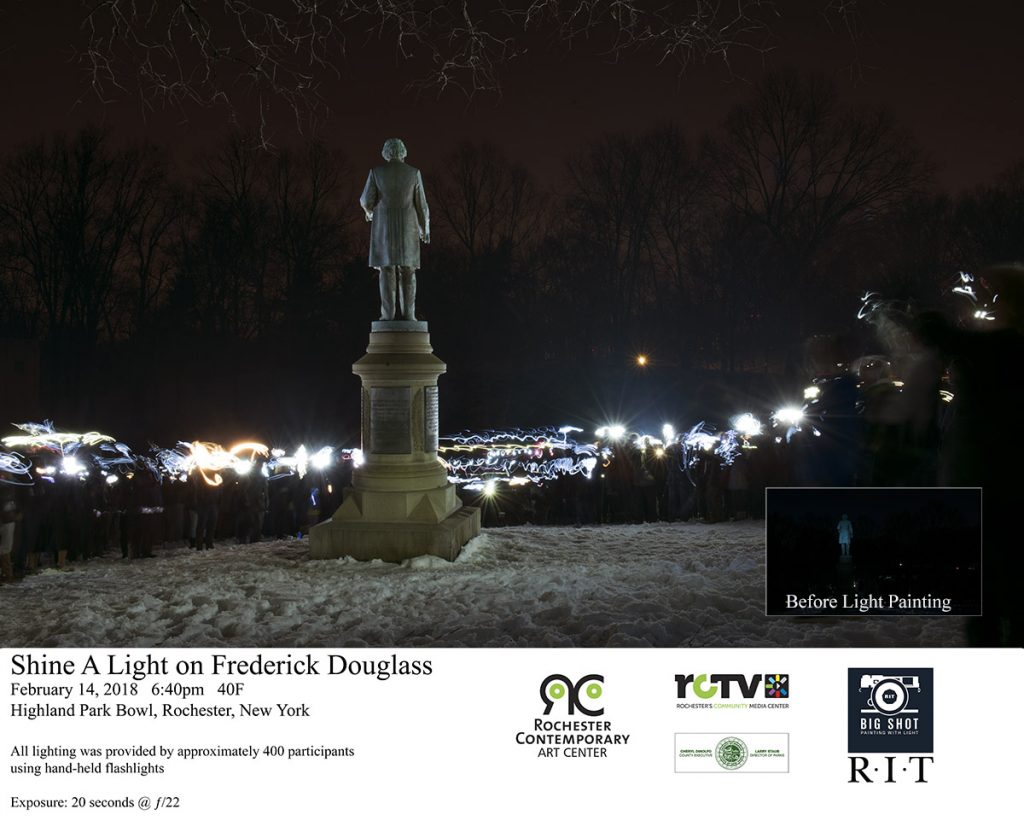
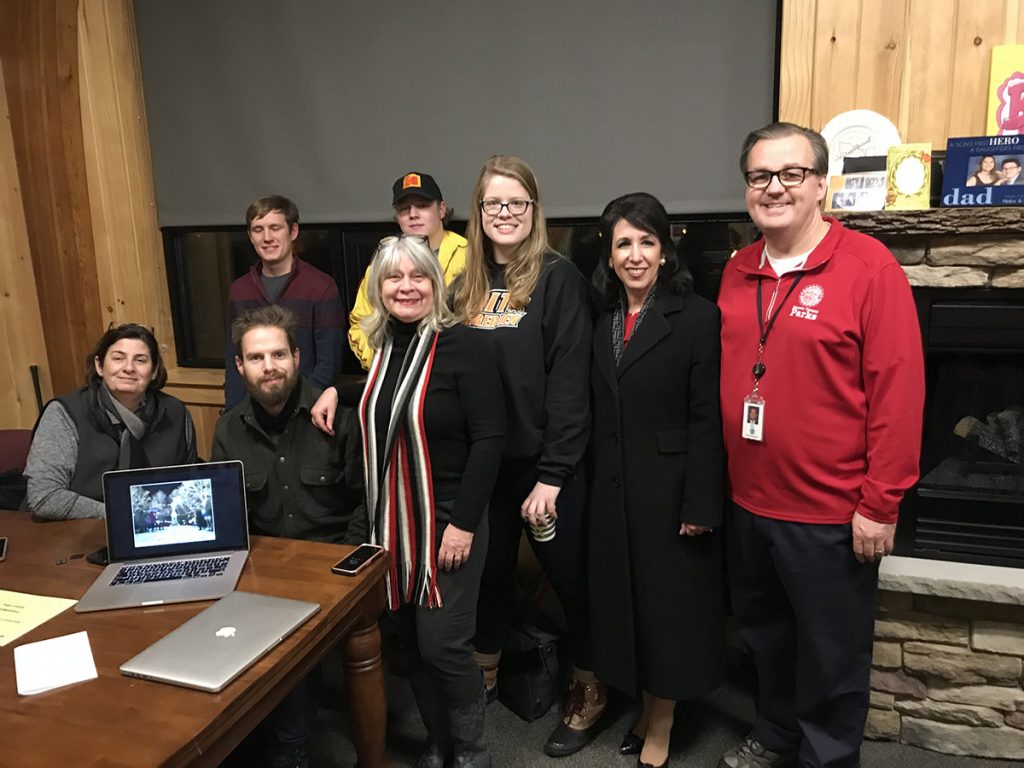
Pictured left to right
Therese Mulligan, RITphoto, Ethan Whitecotton(rear), Dan Hughes(front), Christine Christopher(event pr), Jessica Campbell RITphoto, Cheryl Dinolfo Monroe County Executive, and Larry Staub, Monroe County Parks Commissioner.


